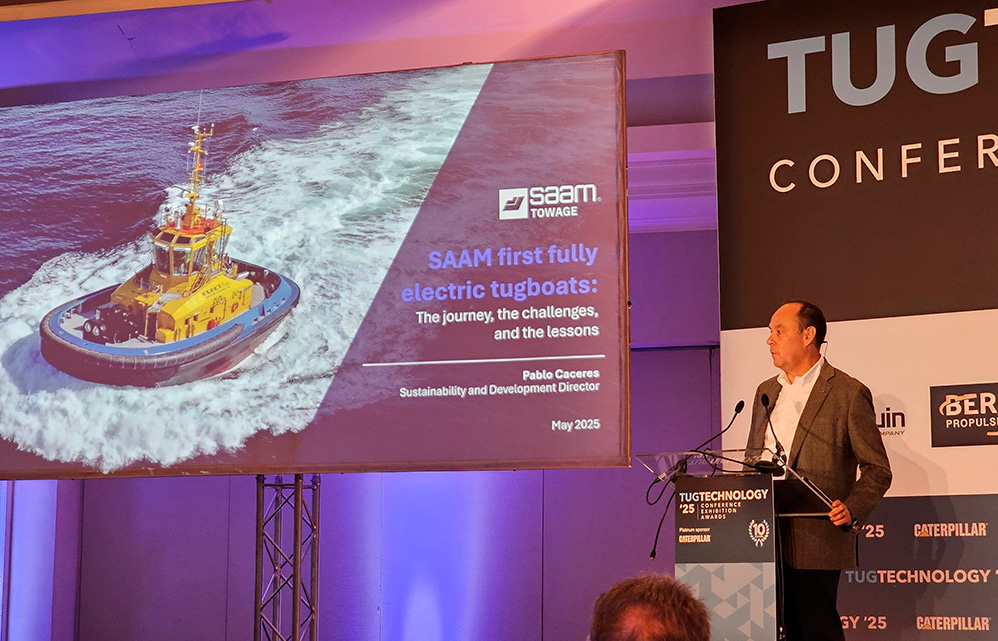- After its first year operating electric tugs in Canada, the company’s carbon intensity index has fallen 72% compared to diesel-powered units with similar features, and a further 90% reduction is projected for the second year of operation.
- In addition, the electric tugs’ operating costs were reported to be 70% lower than its diesel-powered peers.
Antwerp, Belgium. May 26, 2025 | SAAM Towage gave a presentation at Tug Technology 2025 on its successful experience with electric tugboats, marking a significant milestone in decarbonizing towage operations. The initiative, known as the Dynamo Project, deployed two electric tugboats in the Port of Vancouver (Canada) in early 2024, with a third unit scheduled to begin operations in Puerto Chacabuco (Chilean Patagonia) during 2025.
This project underscores SAAM Towage’s commitment to sustainability and operational efficiency, bringing substantial emission reductions, significant fuel savings and lower operational costs.
“Introducing electric tugboats marks a profound change in our industry,” commented SAAM Towage’s Sustainability and Development Manager, Pablo Cáceres. “Our experience in Vancouver demonstrates that maritime electromobility is not only a viable solution that we can provide to our customers, but also offers outstanding environmental and economic benefits. We are proud to lead the way in this transformative shift towards a more sustainable future,” he said.
The journey, however, has not been free of challenges. SAAM Towage has successfully overcome obstacles related to design and construction, battery charging infrastructure, crew training and financial viability. The company effectively addressed these complexities through strategic collaborations with Robert Allan Ltd for tug design and Sanmar Shipyards for construction.
Operating assessment
One year of operations in Canada has yielded impressive sustainability metrics. Electric propulsion and other optimizations have reduced the carbon intensity index by up to 72% compared to traditional diesel tugs. SAAM Towage also projects an additional 90% decrease after the second year of operation. Moreover, the electric tugs’ operating costs have been 70% lower than diesel-powered units.
Looking to the future, SAAM Towage continues to explore alternatives and technologies. “We have a long road ahead of us: We want to advance in the availability and use of alternative fuels; re-engineering of existing tugboats, electrification and introduction of more sustainable technologies; data management and energy efficiency; and reduction of underwater noise,” Cáceres said.
SAAM Towage is actively seeking the best solutions that meet customer requirements and local conditions, similar to its alliances with Neptune in Canada and Enap in Chile.





